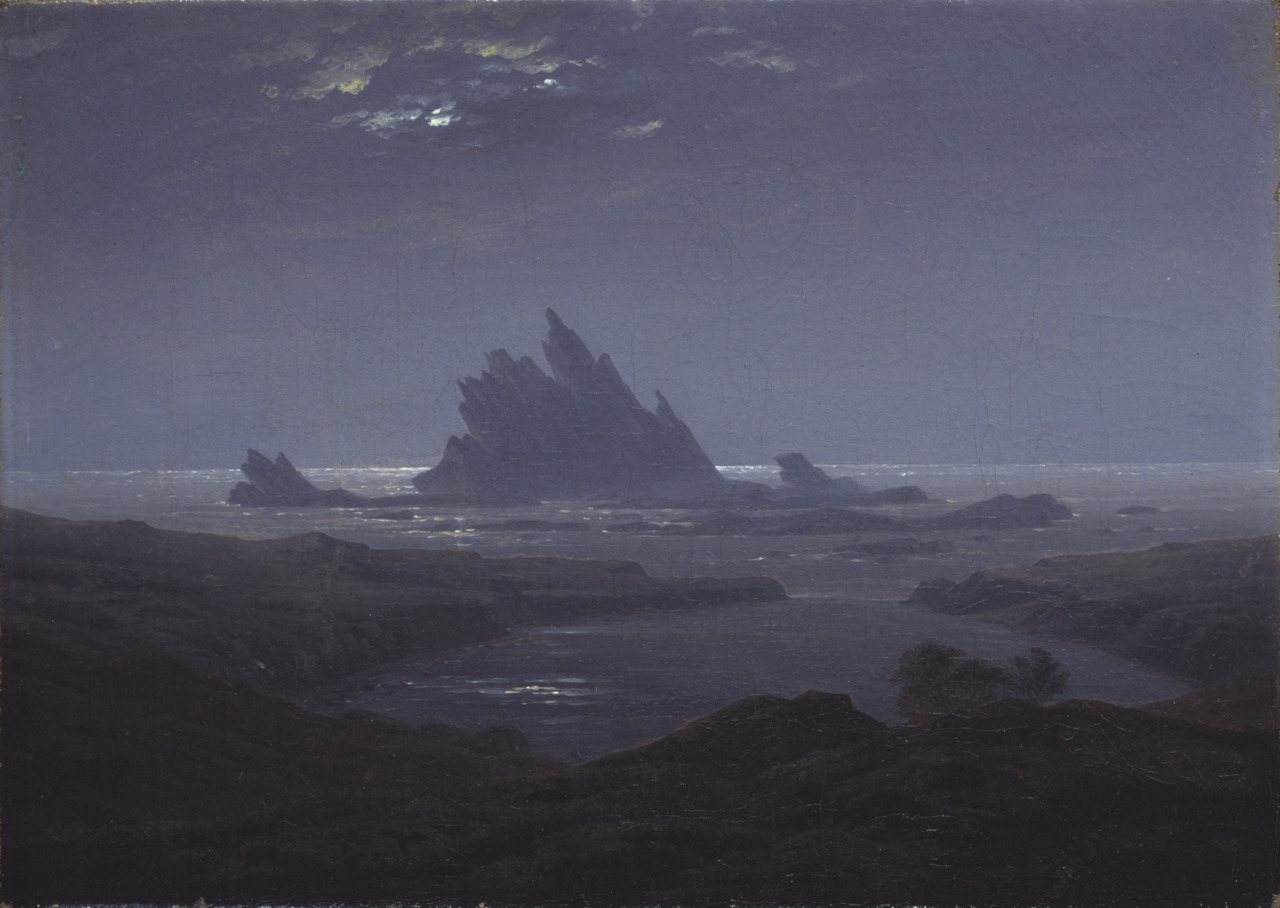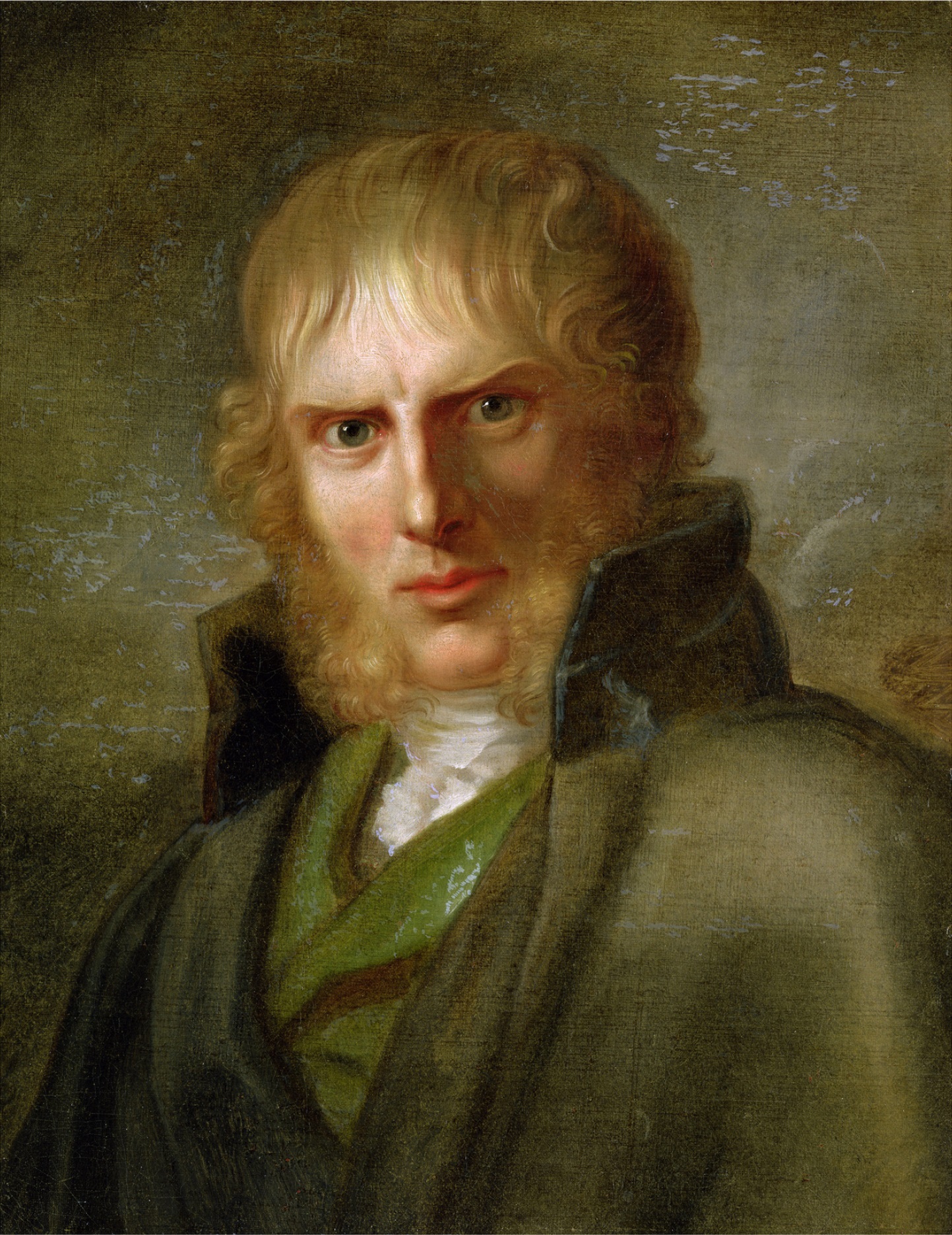Caspar David Friedrich was a 19th-century German Romantic landscape painter, generally considered as the most important German artist of his generation. He is best known for his mid-period allegorical landscapes that typically feature contemplative figures silhouetted against night skies, morning mists, barren trees or Gothic ruins. His primary interest as an artist was the contemplation of nature. His often symbolic and anti-classical work seeks to convey a subjective, emotional response to the natural world.
Friedrich's paintings characteristically set a human presence in diminished perspective amid expansive landscapes. According to the art historian Christopher John Murray, he would reduce the figures to a scale that directs "the viewer's gaze towards their metaphysical dimension". Both Friedrich's life and art have at times been perceived by some to have been marked with an overwhelming sense of loneliness. Art historians and some of his contemporaries attribute such interpretations to the losses he suffered during his youth and to the bleak outlook of his adulthood, while Friedrich's pale and withdrawn appearance helped reinforce the popular notion of the "taciturn man from the North".
Friedrich suffered depressive episodes in 1799, 1803–1805, 1813, 1816 and 1824–1826. There are noticeable thematic shifts in the works he produced during these episodes, which see the emergence of such motifs and symbols like vultures, owls, graveyards and ruins. From 1826, these motifs became a permanent feature of his output, while his use of color became more dark and muted. Carus wrote in 1929 that Friedrich "is surrounded by a thick, gloomy cloud of spiritual uncertainty". Well, sorry for this sad story on this beautiful day today, but it is so beautiful I just couldn't resist.


 Caspar David Friedrich
Caspar David Friedrich